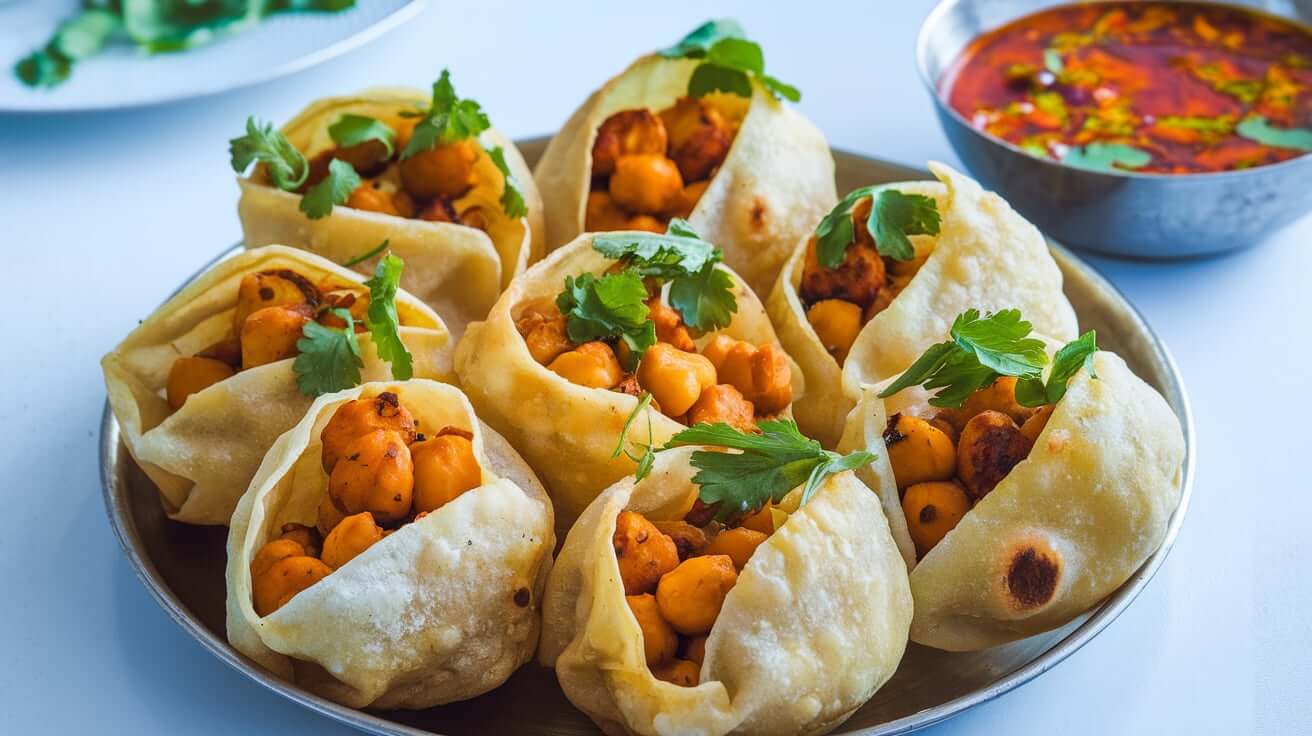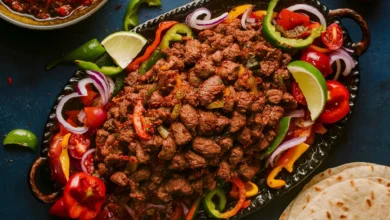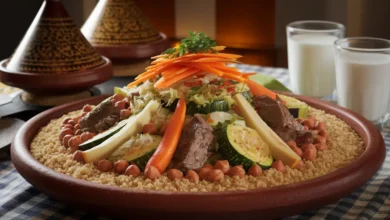Mastering Pani Puri: A Complete Guide to India’s Favorite Street Food

Picture this: a crispy, hollow sphere of dough, filled with a tantalizing mix of spicy, tangy water and savory morsels, bursting with flavor in your mouth. This is Pani Puri, the crown jewel of Indian street food. A beloved snack that transcends regional boundaries, Pani Puri is a culinary adventure that captivates food lovers across India and beyond.
In this comprehensive guide, we’ll take you on a journey through the world of Pani Puri. From its ancient origins to modern-day variations, we’ll explore the history, health benefits, and step-by-step instructions to create this iconic dish in your own kitchen. Whether you’re a seasoned chef or a curious food enthusiast, this guide will help you master the art of Pani Puri and bring the vibrant flavors of Indian street food to your home.
1. The History and Origins of Pani Puri
Origins
Pani Puri’s roots can be traced back to the ancient Magadh region of India, which roughly corresponds to the modern-day states of Bihar and parts of Uttar Pradesh. Legend has it that in the Mahabharata era, Draupadi invented this dish to pass a test given by her mother-in-law, Kunti. Over centuries, it evolved from a royal delicacy to a beloved street food, spreading across the Indian subcontinent.
Regional Names
As Pani Puri traveled across India, it adopted different names and slight variations:
- North India: Known as Golgappa, emphasizing the round, puffy shape of the puri.
- West Bengal: Called Puchka, possibly derived from the ‘puch’ sound made when the puri is punctured.
- Maharashtra and Gujarat: Referred to as Pani Puri, literally meaning “water bread.”
- South India: Often called Gup Chup in parts of Karnataka and Andhra Pradesh.
Each region adds its unique twist to the basic recipe, using local ingredients and flavors.
Cultural Significance
Pani Puri is more than just a snack; it’s a cultural phenomenon. It’s a staple at Indian festivals, parties, and social gatherings. The act of eating Pani Puri is often a shared experience, with friends and family gathered around a street vendor or home kitchen, enjoying the burst of flavors together. Its popularity has made it a symbol of Indian street food culture, representing the country’s love for bold, complex flavors in a single bite.
2. Health Benefits of Pani Puri Ingredients
While Pani Puri is often enjoyed as an indulgence, many of its ingredients offer surprising health benefits:
Chickpeas (Chana)
- High in protein and fiber, supporting muscle health and digestion.
- Rich in vitamins and minerals, including iron, phosphate, calcium, magnesium, manganese, zinc, and vitamin K.
- May help in managing weight and reducing the risk of heart disease.
Potatoes
- Good source of vitamin C, potassium, and vitamin B6.
- Contain antioxidants that may help reduce the risk of chronic diseases.
- Provide a good source of energy due to their carbohydrate content.
Tamarind
- High in antioxidants and anti-inflammatory compounds.
- May help improve digestion and relieve constipation.
- Contains vitamins C and E, supporting immune function and skin health.
Mint and Coriander
- Rich in antioxidants and anti-inflammatory properties.
- May aid in digestion and provide relief from indigestion and bloating.
- Mint may help in relieving nausea and headaches.
- Coriander is a good source of vitamins A, C, and K.
3. Ingredients and Preparation
Making the Puri
Ingredients:
- 1 cup semolina (sooji/rava)
- 1/4 cup all-purpose flour
- 1/4 tsp baking soda
- 1/2 tsp salt
- Warm water (as needed)
- Oil for deep frying
Instructions:
- In a large bowl, mix semolina, all-purpose flour, baking soda, and salt.
- Gradually add warm water and knead into a firm dough. Cover and let it rest for 20-30 minutes.
- Divide the dough into small portions and roll each into a thin circle (about 2-3 inches in diameter).
- Heat oil in a deep pan. Once hot, gently slide the rolled puris into the oil.
- Press lightly with a slotted spoon. The puri should puff up.
- Fry until golden brown, then remove and drain on paper towels.
Preparing the Pani (Spicy Water)
Ingredients:
- 2 cups fresh mint leaves
- 1 cup fresh coriander leaves
- 2-3 green chilies (adjust to taste)
- 1 inch ginger
- 2 tbsp tamarind paste
- 1 tsp roasted cumin powder
- 1 tsp black salt
- 1 tsp chaat masala
- Salt to taste
- 4-5 cups cold water
Instructions:
- Blend mint leaves, coriander leaves, green chilies, and ginger into a smooth paste.
- In a large bowl, mix this paste with tamarind paste, cumin powder, black salt, chaat masala, and salt.
- Add cold water and mix well. Adjust seasoning to taste.
- Refrigerate for at least an hour before serving.
Making the Filling
Ingredients:
- 1 cup boiled chickpeas
- 2 medium potatoes, boiled and cubed
- 1 tsp chaat masala
- 1/2 tsp roasted cumin powder
- Salt to taste
- 2 tbsp finely chopped onions (optional)
- 2 tbsp finely chopped tomatoes (optional)
- 2 tbsp tamarind chutney (optional)
- 2 tbsp finely chopped fresh coriander
Instructions:
- In a bowl, mix boiled chickpeas and cubed potatoes.
- Add chaat masala, roasted cumin powder, and salt. Mix well.
- If using, add chopped onions, tomatoes, and tamarind chutney.
- Garnish with fresh coriander.
4. Assembling the Pani Puri
- Gently tap the top of a puri to create a small hole.
- Fill the puri with a spoonful of the chickpea-potato mixture.
- Dip the filled puri into the chilled pani or spoon the pani into the puri.
- Serve immediately and enjoy in one bite!
5. Serving Suggestions
- As an Appetizer: Serve Pani Puri as a fun, interactive appetizer at parties. Set up a DIY Pani Puri station with separate bowls for puris, filling, and pani.
- As a Snack: Enjoy Pani Puri as a light evening snack or a weekend treat.
- With Chutneys: Offer additional chutneys like sweet tamarind chutney or spicy green chutney for guests to customize their Pani Puri experience.
- Pani Puri Platter: Create a platter with filled puris, a bowl of chilled pani, and various chutneys for a visually appealing presentation.
6. Common Mistakes and How to Avoid Them
Puris Not Puffing
- Ensure the oil is hot enough before frying. Test with a small piece of dough; it should rise to the surface immediately.
- Roll the puris evenly and thinly. Thick puris won’t puff properly.
- Don’t overcrowd the frying pan. Fry in small batches for best results.
Pani Too Spicy or Bland
- Always taste-test your pani before serving. Adjust spices gradually.
- For less heat, reduce the number of green chilies or remove their seeds.
- To increase flavor, add more mint, coriander, or chaat masala.
Soggy Puris
- Assemble Pani Puri just before serving. Once filled, consume immediately.
- If serving at a gathering, keep the components separate and let guests assemble their own.
- Store puris in an airtight container to maintain crispness.
7. Variations and Regional Adaptations
Ragda Pani Puri
Replace the chickpea filling with ragda (a spicy pea curry) for a heartier version popular in Maharashtra.
Bhel Puri
Transform your Pani Puri into Bhel Puri by using puffed rice, sev (crispy chickpea noodles), and finely chopped vegetables as the filling. Drizzle with tamarind and mint chutneys.
Dahi Puri
For a creamy twist, top filled puris with whisked yogurt, tamarind chutney, and sev. This cooling variation is perfect for summer.
8. Conclusion
Mastering Pani Puri at home is a delightful culinary adventure. With its perfect balance of flavors and textures, this iconic Indian street food brings joy to every bite. By following this guide, you can recreate the magic of Pani Puri in your own kitchen, impressing friends and family with your newfound skills.
Remember, the beauty of Pani Puri lies in its versatility. Don’t be afraid to experiment with different fillings, adjust the spice levels of your pani, or try regional variations. The key is to have fun and enjoy the process of creating this beloved snack.
So gather your ingredients, invite some friends over, and embark on your Pani Puri journey. Who knows? You might just become the go-to Pani Puri expert in your social circle!
9. FAQ Section
Q: Can I make the puris in advance?
A: Yes, you can make puris in advance. Store them in an airtight container at room temperature for up to a week. To keep them crispy, you can add a few raw rice grains or a silica gel packet to the container to absorb moisture.
Q: Can I use store-bought puris?
A: Store-bought puris are convenient and can be used. However, homemade puris often taste fresher and allow you to control the ingredients. If using store-bought, check for freshness and ensure they’re not broken before serving.
Q: How can I store leftover pani?
A: Leftover pani can be stored in an airtight container in the refrigerator for up to 2-3 days. Before serving, give it a good stir and adjust the seasoning if needed, as flavors may intensify during storage.
Q: Is there a way to make Pani Puri healthier?
A: To make a healthier version, you can bake or air-fry the puris instead of deep-frying. Use whole wheat flour or a mix of whole wheat and semolina for the puris. Increase the proportion of vegetables in the filling and reduce the amount of tamarind chutney to lower sugar content.
Q: Can I prepare Pani Puri for a large group?
A: Yes, Pani Puri is great for large gatherings. Prepare components in advance and set up a DIY station where guests can assemble their own. This interactive approach is fun and ensures the puris stay crispy.




